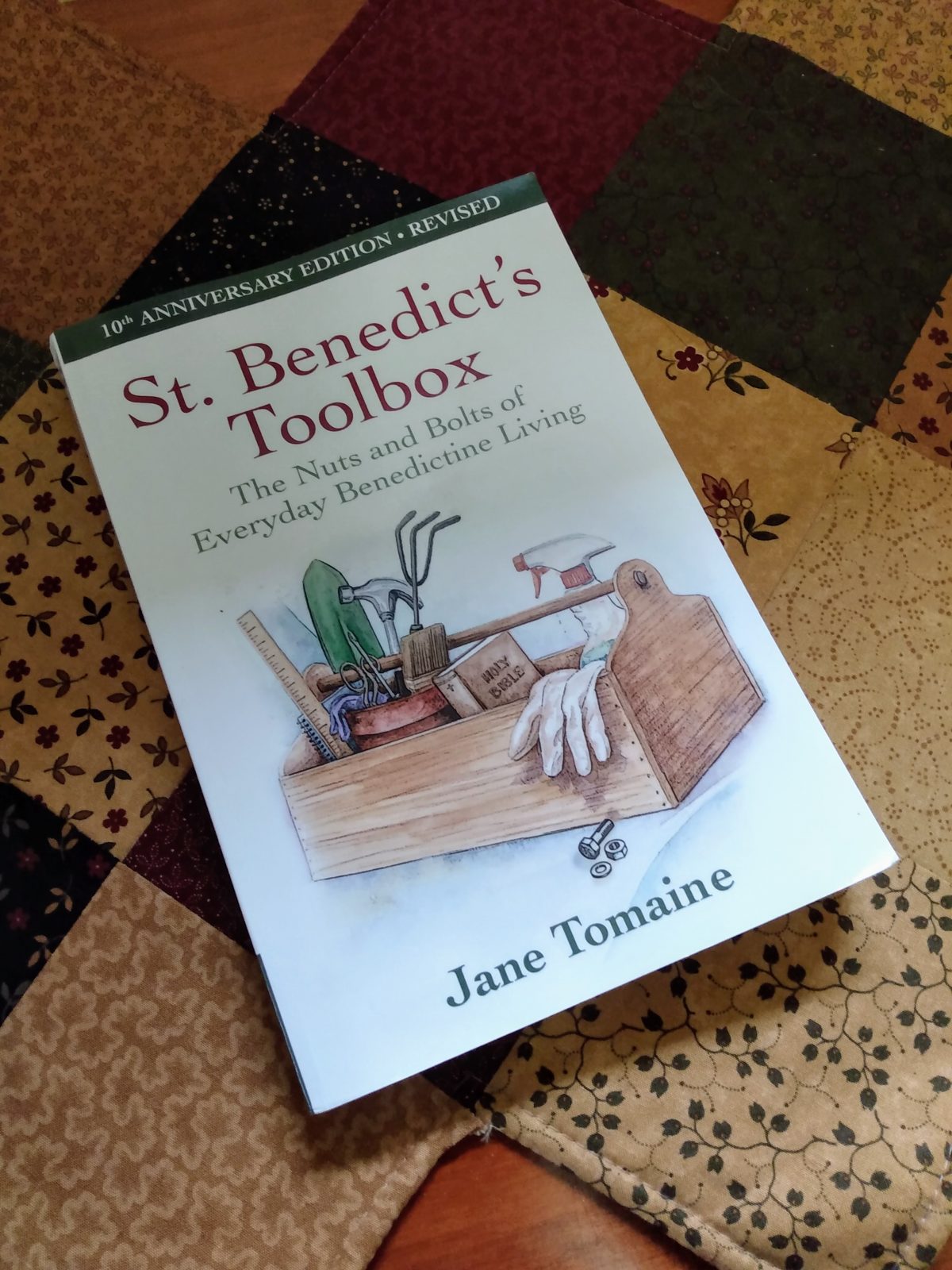By The Rev. Frances Drolet-Smith, Oblate, SSJD

Not long after we were married, my husband Paul and I, and his mother Elaine, traveled to Weston Priory, a Benedictine community in Weston, Vermont. We’d come to “know” the Brothers through their music, which we sang frequently at the seminary we attended, and I had longed to visit there.
In hindsight, it was a day of ironies. Elaine had come with us reluctantly. Neither she, nor we, could have predicted that in a very short time she would come to form a strong bond with that prayerful community whose loving support would sustain her through the devastating trials of cancer.
Through her continued association with the Priory, Elaine introduced me to the Rule of Benedict. In reading it then and many times since, I’ve found a practical and refreshingly realistic guide to the Christian life. I’ve sought balance in my life of prayer and work, of worship and play for as long as I can remember, and the Rule has nourished, enabled – and challenged me, in that quest. The Rule reminds me to be attentive, to daily make the best possible offering of myself. Though more than 1500 years old, it still speaks with clarity and sensibility today; not only to monastics, but to anyone desiring to share more fully in the joys of Christian life.
Since January, I’ve been leading an online book study on “St. Benedict’s Toolbox: the nuts and bolts of everyday Benedictine living”. The author, the Rev. Jane Tomaine, says her reason for writing the book was to “translate the Rule into everyday practices for a do-able contemplative life with God.” The word “do-able” is affirming and so apt, for it summarizes Benedict’s deepest hopes for his Community. In his Prologue, he offers the Rule as “nothing harsh, nothing burdensome”. His approach to seeking God was, and remains, both sensible and humane.
The Rule provides guidelines on how to live a spiritual life well while living in community.
It is one thing to be a prayerful mystic on one’s own – quite another to test one’s true grasp of a prayerful life when rubbing shoulders, figuratively and literally, with a group of others. Along with guidance on prayer and corporate worship, the Rule dispenses advice on forming healthy relationships, using time wisely for maintaining a balanced life. There are pearls about leadership, authority, hospitality, service and possessions. According to Benedict, moderation is the best way to meet physical, intellectual or spiritual needs.
Jane Tomaine skillfully takes the major themes of the Rule and creates practical “tools” readers can use to practice living-out this doable contemplative life.
In the toolbox are instructions on prayer practices and other spiritual disciplines. There are journal prompts designed to provide deep reflection on what has been learned by keeping the Rule.
The Rule is not new to the people with whom I am sharing the book study. They are Oblates, or they are discerning a call to be an Oblate, of the Sisterhood of St. John the Divine, a monastic community within the Anglican Church, founded in Toronto in 1884. Oblates, after a period of discernment, make promises to offer themselves in a life of love and service alongside the Sisterhood, joining them in their prayer and work, and to keep a Rule of Life,
What we all seem to appreciate most about Tomaine’s approach is her invitation to thoroughly explore small portions of the Rule at a time by suggesting four or five tools that may help us to deepen our experience of particular aspects of it. The practical tools are designed to help the reader to live in the present moment, to create a healthier balance of activities in daily life, and to connect with God in creative ways during the day.
To me, the perfect definition of doable contemplative life with God is: “nothing harsh, nothing burdensome.” The Rule supports me in my efforts to be prayerful and to live prayerfully.
As we continue to live in these Covid-days, still hampered by limitations and Zoom fatigue, the offer of a practical guide to help us “stay the course” surely also helps us to “keep the faith, walk steadily on the road revealed by God.”


